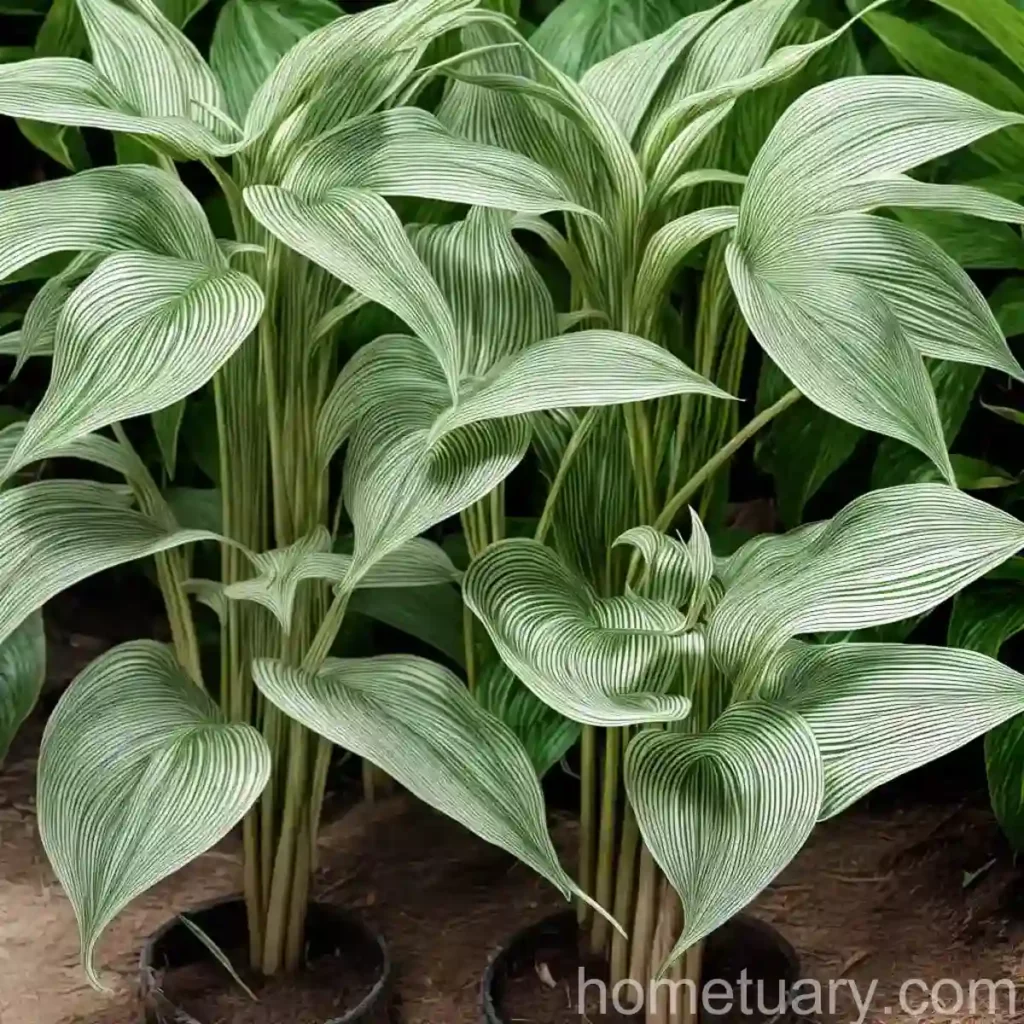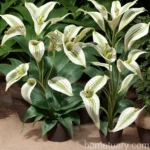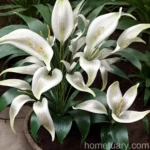What is Arisaema serratum var. serratum?
Arisaema serratum var. serratum, commonly known as the Japanese Cobra Lily or Wild Arum, is a unique and intriguing plant species belonging to the Araceae family. This perennial herbaceous plant is native to various regions in Asia, including Japan, China, and Korea. Its distinct appearance and interesting cultural uses make it a fascinating subject for plant enthusiasts and horticulturists alike.
Key Takeaways – Arisaema serratum var. serratum
Before delving deeper into the culture, uses, and care of Arisaema serratum var. serratum, let’s take a brief look at some important key takeaways related to this captivating plant:
-
Arisaema serratum is also known as the Japanese Cobra Lily, Jack-in-the-Pulpit, and Wild Arum.
-
This plant has been referred to by various other names such as Arum serratum, Eastern Jack-in-the-Pulpit, and Arum Lily.
-
Arisaema serratum var. serratum boasts captivating flowers, and it is often used in traditional and cultural practices.
-
When cultivating Arisaema serratum, it is essential to maintain appropriate water, sunlight, fertilizer, and soil conditions to ensure its optimal growth and development.
-
This plant is known to be susceptible to certain pests and diseases, and understanding these factors is crucial for its successful cultivation.
-
Arisaema serratum has notable ethnobotanical uses and holds symbolism in various cultures, adding to its allure and significance.
Culture
Understanding the culture and cultural significance of Arisaema serratum var. serratum is essential for appreciating its importance beyond its ornamental value. This plant has been deeply rooted in traditional practices and holds a special place in the folklore and symbolism of different regions where it is found.
Uses
-
Medicinal Uses: In traditional cultures, the various parts of Arisaema serratum, including its rhizomes and tubers, have been utilized for their medicinal properties. These plants have been used to treat conditions such as rheumatism, snakebites, and respiratory ailments.
-
Folklore and Symbolism: Arisaema serratum has been associated with symbolism and folklore in several cultures. It is often linked to notions of protection, strength, and resilience, and has been used in rituals and ceremonies to invoke these qualities.
Care
Providing the right care and attention to Arisaema serratum var. serratum is crucial for its successful cultivation. This involves understanding its specific requirements in terms of water, sunlight, fertilizer, soil, and other essential factors.
Water
Arisaema serratum thrives in moist, well-draining soil. During the growing season, it is important to keep the soil consistently moist, but not waterlogged. As the plant enters dormancy, the watering should be reduced to prevent the risk of rot.
Sunlight
While Arisaema serratum prefers partial shade to full shade, it is essential to provide adequate indirect light for its growth and development. Avoid exposing the plant to direct sunlight, as it can lead to leaf scorch and damage.
Fertilizer
Using a balanced, organic fertilizer can support the healthy growth of Arisaema serratum. Applying a slow-release fertilizer during the growing season can help provide essential nutrients for the plant’s development.
Soil
A well-draining, humus-rich soil is ideal for cultivating Arisaema serratum. It thrives in slightly acidic to neutral soil pH. It is essential to ensure that the soil is consistently moist but not waterlogged, as waterlogging can lead to root rot.
Pruning
Minimal pruning is required for Arisaema serratum. Dead or damaged leaves can be removed to maintain the plant’s appearance, but extensive pruning is generally not necessary.
Propagation
Arisaema serratum can be propagated through offsets, division of rhizomes, or by collecting and planting seeds. When propagating through division, it is important to select healthy rhizomes with viable buds to ensure successful establishment.
Container Popularity
Due to its unique and visually striking appearance, Arisaema serratum is popular among plant enthusiasts for container gardening. It adds an exotic and captivating touch to indoor or outdoor container displays.
Container Common Diseases
In container cultivation, Arisaema serratum may be susceptible to certain diseases, including fungal infections and rot. Proper drainage and ventilation are crucial to prevent such issues.
Disease Diagnosis
Identifying common diseases in Arisaema serratum, such as leaf spot, root rot, and powdery mildew, is essential for promptly addressing and treating these conditions. Regular inspection of the plant and its surrounding environment can aid in early disease detection.
Common Pests
Arisaema serratum may attract pests such as aphids, snails, and slugs. Regular monitoring and timely intervention can help manage pest infestations and prevent damage to the plant.
Botanist’s Tips
As a botanist or plant enthusiast, here are some valuable tips to consider when cultivating Arisaema serratum:
-
Ensure Adequate Drainage: Proper drainage is essential to prevent waterlogging, which can be detrimental to the plant’s health.
-
Monitor Moisture Levels: Regularly monitor the soil moisture to maintain the ideal growing conditions for Arisaema serratum.
-
Provide Adequate Shade: Protect the plant from direct sunlight, and ensure it receives the appropriate level of shade for optimal growth.
-
Address Pests and Diseases Promptly: Timely pest and disease management is crucial to safeguard the health and vitality of Arisaema serratum.
Fun Facts
Exploring the fascinating world of Arisaema serratum reveals several intriguing and captivating facts about this remarkable plant:
-
The distinctive appearance of Arisaema serratum, particularly its hooded, lily-like spathe, has earned it the name “Cobra Lily” due to its resemblance to a cobra’s hood.
-
Some species of Arisaema serratum are known to exhibit thermogenesis, producing heat to attract pollinators and enhance their reproductive success.
-
Arisaema serratum has been a subject of interest in botanical research, contributing to our understanding of plant morphology and adaptations.
Now that we have delved into the culture, uses, and proper care of Arisaema serratum var. serratum, it’s evident that this plant holds a significant place in traditional practices, horticulture, and botany. Its unique characteristics and cultural significance make it a captivating subject for further exploration and appreciation.
For those interested in delving deeper into the world of Arisaema serratum, the following external resources provide valuable insights and information:
- The Plant List – Arisaema serratum
- Flora of China – Arisaema serratum
- Royal Horticultural Society – Arisaema serratum
- Botanical Society of America – Arisaema serratum
These resources offer valuable botanical insights, cultivation guidance, and additional information about the captivating world of Arisaema serratum. Whether it’s exploring its ethnobotanical uses, learning about its natural habitat, or delving into its unique reproductive strategies, the allure of Arisaema serratum continues to captivate plant enthusiasts and researchers alike.















